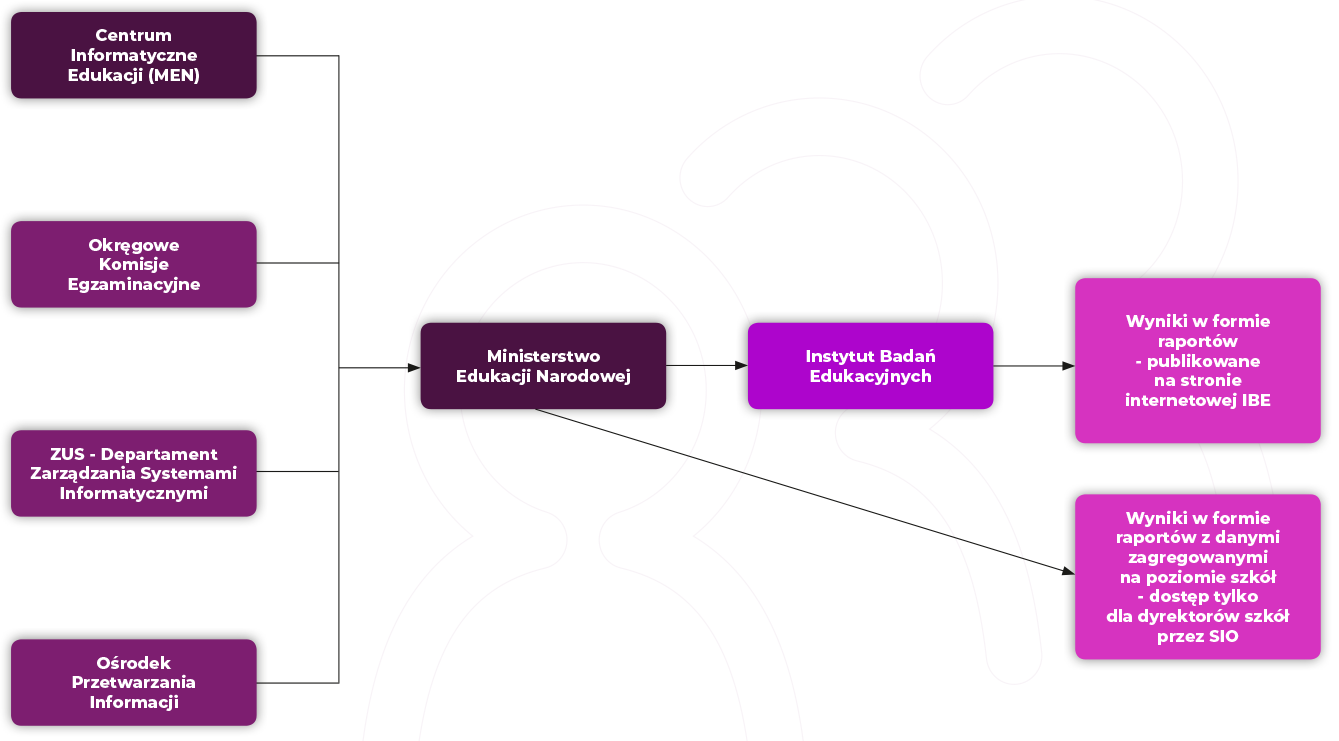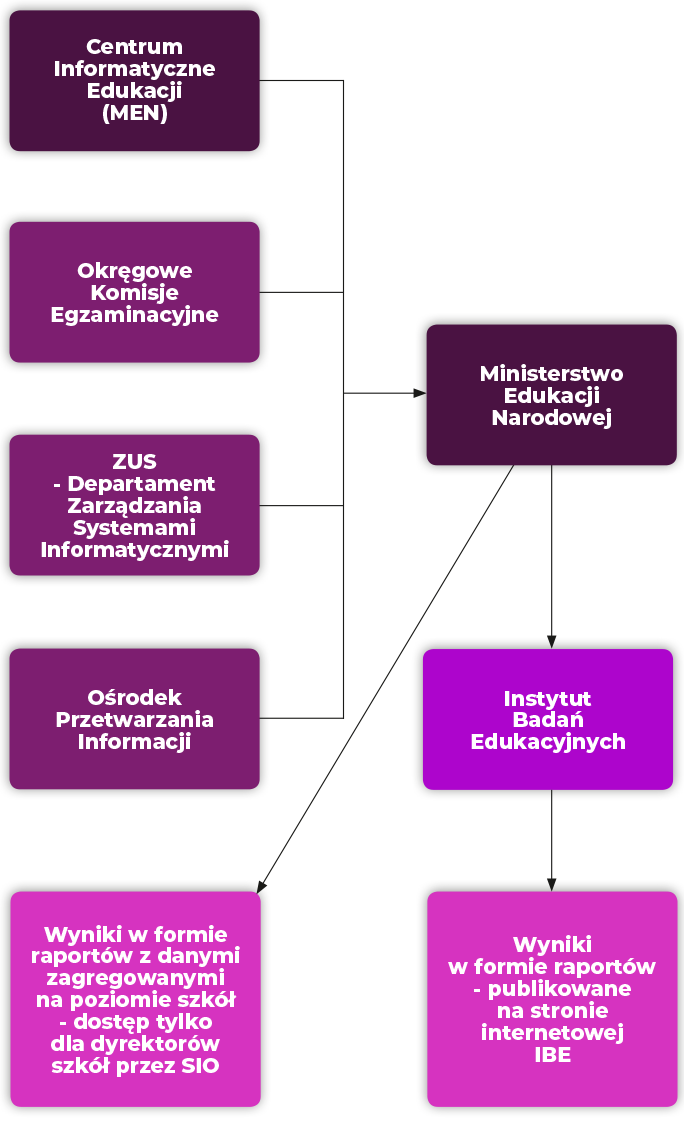
Strona główna » Project assumptions » Design of the System for Monitoring the Professional and Educational Pathways of Graduates

The planned system for monitoring the professional and educational pathways of secondary school graduates will annually provide standardised and reliable information on both the activity in the labour market (type of employment, salary) and the further learning (continuing education in the school or higher education systems) of vocational and general secondary school graduates.
The system will be based on administrative data obtained annually and at no cost from the IT resources of SIO2 (Educational Information System), OKE (Regional Examination Boards), POL-on (The System of Information on Science and Higher Education) and ZUS (The Social Insurance Institution). The detailed scope of processed data and the methods of their use in the monitoring will be precisely defined in legal acts.
The system will be characterised by a high level of data processing automation and the generation of reports tailored to the information needs of its recipients. A specialised unit under the jurisdiction of the Ministry of National Education, operator of the Educational Information System: the Education IT Centre (Centrum Informatyczne Edukacji) will be responsible for processing and linking register data. The Educational Research Institute will be responsible for analysing the data and preparing monitoring reports.
Reports for schools and their management bodies will be available only by logging into the Educational Information System (SIO2). In turn, reports by voivodeship, county and economic sector will be publicly available through the websites of the Educational Research Institute.
Amendments to the Act of 14 December 2016 – Prawo oświatowe (Journal of Laws of 2019, item 761) (the school education act)
Amendments to the provisions of other acts regulating the functioning of registers required to monitor the situation of graduates of sectoral vocational education. The planned changes will affect the Act of 15 April 2011 on the educational information system (Journal of Laws of 2019, item 60), the Act of 13 October 1998 on the social insurance system (Journal of Laws of 2019, item 730) and the Act of 20 July 2018 – Law on Higher Education and Science (Journal of Laws of 2019, item 730).

The vocational education system should flexibly respond to the needs of the labour market, be open to lifelong learning and the educational and professional mobility of graduates. Providing feedback on the course of the educational and professional careers of graduates meets this challenge because it increases the ability of the VET system to respond to changing socio-economic conditions on an ongoing basis.
The system for monitoring the situation of graduates will follow both their continuing educational pathways and their participation in the labour market, and will be based on the technology of automated administrative data processing, which is not only a cost-effective solution, but also does not generate any additional burden on schools, students or graduates.
The system will provide reliable information on graduates’ employment and wage conditions in specific professions, economic sectors and regions. Such data significantly reduces information asymmetry in the relationship between graduates taking up their first job and employers. They can be used by employers to update and better align graduate employment policies with the realities of the labour market.
Reliable and easily available knowledge about the situation of graduates will allow an evidence-based image of vocational education to be created. Access to systematically collected and shared information on VET will help overcome the negative stereotypes affecting it, which are actually not confirmed in reality.
The diagram below presents the planned method of data processing in the system. The Education IT Centre (CIE), a state unit under the jurisdiction of the Ministry of National Education, receives the required data from administrators. In the next step, the data is merged into one file using the personal identification (PESEL) number. The CIE then pseudonymizes the data (i.e. encrypts the PESEL number to protect the privacy of individuals), which after this operation is sent to the Educational Research Institute.
IBE prepares the results in the form of statistical summaries for various levels of aggregation (schools, counties and voivodships), which are presented in automatically generated reports. Reports containing the aggregated results at the school level are sent to the Ministry of National Education and then published in the Educational Information System (SIO), where, after logging in, school directors will be able to download reports with the results of their school. Reports with aggregated results at the county and voivodship levels will be publicly available from IBE’s websites.










